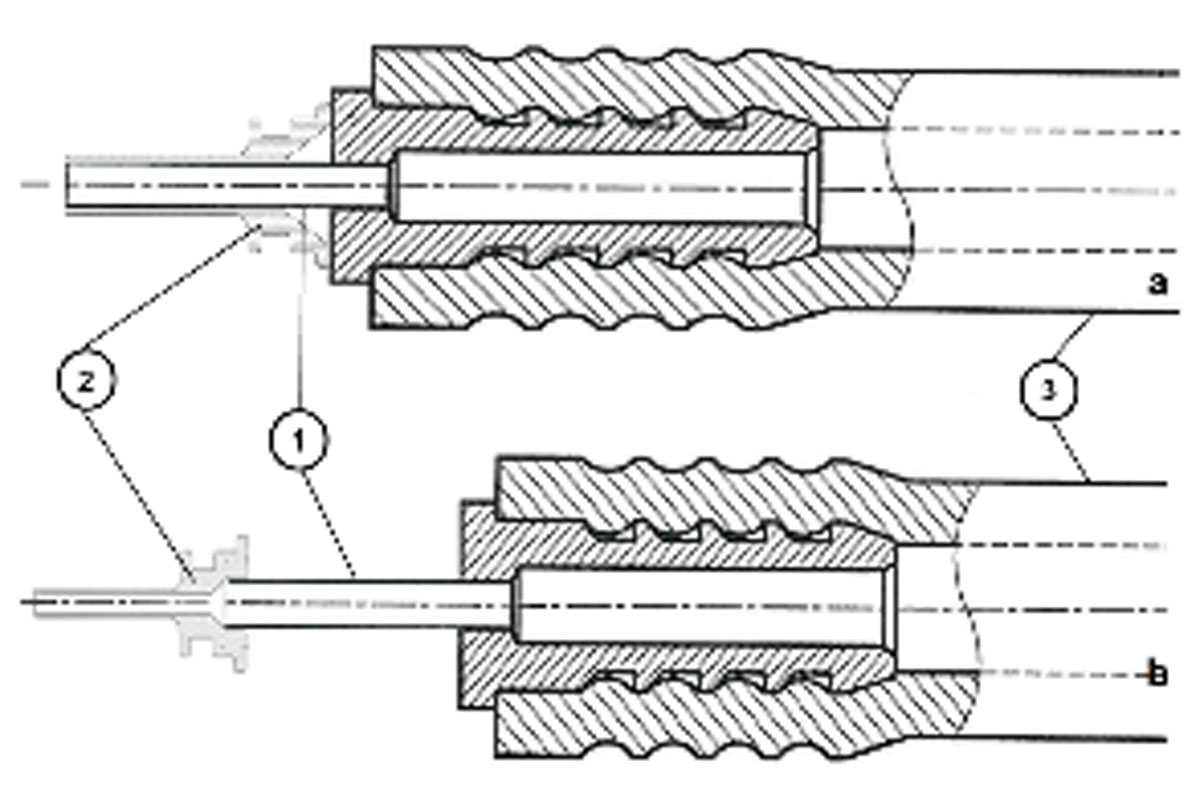Keywords
Abstract
Purpose: Intraocular pressure (IOP) during pars plana vitrectomy (PPV) decreases as aspiration generates flow, a phenomenon known as head loss. Since direct measurement of the IOP during surgery is impractical, currently, available compensating systems infer IOP by measuring infusion flow rate and estimating corresponding pressure drop. The purpose of the present paper is to propose and validate a physically based algorithm of the infusion pressure drop as a function of flow.
Methods: Complete infusion lines (20G, 23G, 25G and 27G) were set up and primed. The infusion bottle was set at incremental heights and flow rate measured 10 times and recorded as mean Å} SD. Overall head loss (OHL) was defined, according to hydraulics laws, as the sum of frictional head loss (FHL; i.e., pressure drop due to friction along tubing) and exit head loss (EHL). The latter is equal to the kinetic energy of the exiting flow through the trocar (FKE = V2/2g). A 2nd degree polynomial equation (i.e., ΔP = aQ2 + bQ, where ΔP is the pressure drop, or OHL, and Q is the volumetric flow) was derived for each gauge and compared to experimental data 2nd order polynomial best-fit curve.
Results: Ninety-seven percent of the pressure values for all gauges predicted using the derived equation fell within 2 SD of the mean difference yielding a Bland-Altman statistical significance when compared to 91% of best fit curve.
Conclusion: The derived equations accurately predicted the head loss for each given infusion line gauge and can help infer IOP during PPV.
References
Rossi T, Querzoli G, Angelini G, Rossi A, Malvasi C, Iossa M, Ripandelli G. Ocular perfusion pressure during pars plana vitrectomy: a pilot study. Invest Ophthalmol Vis Sci. 2012;55:8497-8505.
Rossi T, Querzoli G, Gelso A, Angelini G, Rossi A, Corazza P, Landi L, Telani S, Ripandelli G. Ocular perfusion pressure control during pars plana vitrectomy: testing a novel device. Graefes Arch Clin Exp Ophthalmol. 2017 Sep 8. doi: 10.1007/s00417-017-3799-2
Abulon DJ, Buboltz DC. Performance Comparison of High-Speed Dual-Pneumatic Vitrectomy Cutters during Simulated Vitrectomy with Balanced Salt Solution. Transl Vis Sci Technol. 2015;29:4-6.
Falabella P, Stefanini FR, Lue JC, et al. Intraocular pressure changes during vitrectomy using Constellation vision system’s intraocular pressure control feature. Retina. 2016;36:1275-1280.
Okamoto F, Sugiura Y, Okamoto Y, Hasegawa Y, Hiraoka T, Oshika T. Measurement of ophthalmodynamometric pressure with the vented-gas forced-infusion system during pars plana vitrectomy. Invest Ophthalmol Vis Sci. 2010;51:4195-4199
Sutera, SP, Skalak, R. The History of Poiseuille’s Law. Annu Rev Fluid Mech. 1993;25:1–20. doi:10.1146/annurev.fl.25.010193.000245
Poiseuille, J. L. M. Recherches experimentales sur Ie mouvement des liquides dans les tubes de tres petits diametres; II. Influence de la longueur sur la quantite de liquide qui traverse les tubes de tres petits diametres; III. Influence du diametre sur la quantite de liquide qui traverse les tubes de tres petits diametres. C. R. Acad. Sci.1840; 11:1041-1048
Bland JM, Altman DG. Statistical methods for assessing agreement between two methods of clinical measurement. Lancet. 1986;2:307-310.
Bland JM, Altman DG. Comparing methods of measurement: why plotting difference against standard method is misleading. Lancet. 1995;346:1085-1087.
Minami M1, Oku H, Okuno T, Fukuhara M, Ikeda T. High infusion pressure in conjunction with vitreous surgery alters the morphology and function of the retina of rabbits. Acta Ophthalmol Scand. 2007;85:633-639.
Kim YJ, Park SH, Choi KS. Fluctuation of infusion pressure during microincision vitrectomy using the constellation vision system. Retina. 2015;5:2529-2536.
Moorhead LC, Gardner TW, Lambert HM, O’Malley RE, Willis AW, Meharg LS, Moorhead WD. Dynamic intraocular pressure measurements during vitrectomy. Arch Ophthalmol. 2005;123:1514-1523.
Michelson G, Groh MJ, Langhans M. Perfusion of the juxtapapillary retina and optic nerve head in acute ocular hypertension. Ger J Ophthalmol. 1996;5:315-321
Abulon DJ, Buboltz DC. Performance Comparison of High-Speed Dual-Pneumatic Vitrectomy Cutters during Simulated Vitrectomy with Balanced Salt Solution. Transl Vis Sci Technol. 2015;29:4-6.
Sugiura Y, Okamoto F, Okamoto Y, Hiraoka T, Oshika T. Intraocular pressure fluctuation during microincision vitrectomy with constellation vision system. Am J Ophthalmol. 2013;156:941-947.
